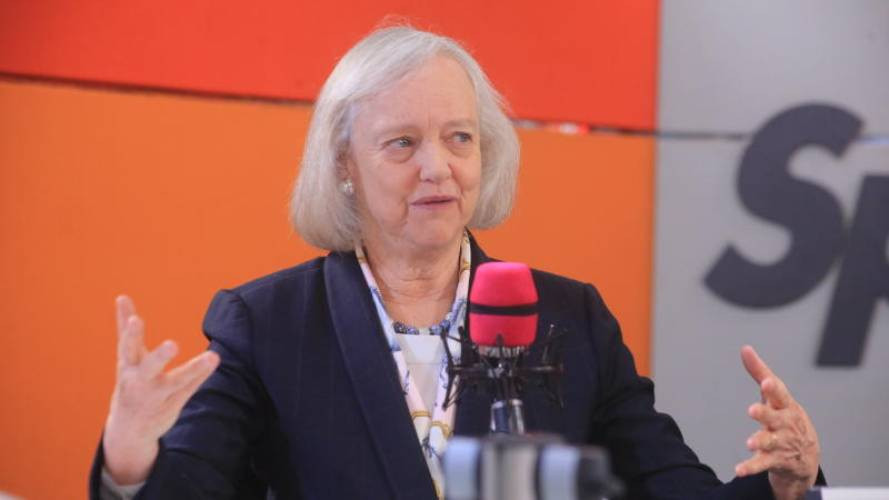by James Anyanzwa
Players in the capital markets have agreed on introducing a hybrid model of trading bonds.
The latest move follows a resolution by the Capital Market Authority (CMA)’s bond steering committee, created to oversee the overall implementation of an Over-the-Counter (OTC) market for bonds.
The committee, which has been meeting since June, comprises the CMA, Nairobi Stock Exchange (NSE), Central Depository and Settlement Corporation.
Others are the Ministry of Finance and the Central Bank of Kenya (CBK).
Also represented include the Kenya Association of Stockbrokers and Investment Banks.
"It is a resolution of our committee to adopt the hybrid model," Ms Stella Kilonzo, CMA’s chief executive told The Financial Journal last week.
Under the new model, participants in the bond market have options to either trade debt instruments directly or use intermediaries — brokers and dealers — in the secondary market.
The system is expected to tame discontent, which has been building in the industry over fears of loss of commission incomes earned by NSE and brokerage firms from bond transactions.
The committee, which is chaired by Ms Kilonzo, seeks to put in place arrangements for an OTC market and define the model and operating platform.
The implementation of OTC market is among the measures the authority is undertaking to reform the bond market to attract more issuers. The CMA says establishment of the market will improve the circulation of money in the secondary bond market.
But the new trading model could be a major reprieve to commercial banks, which have been pushing to trade bonds away from the NSE.
The banks through the Kenya Bankers Association have been demanding a radical policy shift that would allow them exclude brokers in bond trading.
This, they argue, will free them from the monopoly enjoyed by the NSE and give them flexibility to deepen capital markets.
Indeed, the OTC market model has been successful in countries with vibrant bond markets.
Stay informed. Subscribe to our newsletter
However, though the model has low listing and compliance requirements, it is restricted to high net worth investors such as fund managers, insurance companies, pension funds and banks which are normally regarded as having capacity to carry out due diligence of their own.
CMA is strengthening the legal and regulatory environment to a disclosure-based regime for issuing and trading of bonds to bolster efficiency, transparency and reduce systemic risk.
Efforts are also underway to strengthen and integrate the clearing, depository and settlement systems.
Other measures include training and capacity building, financial education of investors and issuing of longer dated bonds.
An initial proposal to introduce the model to run parallel with the NSE never settled well with brokers. The brokers have accused banks of pushing for direct trading of bonds among themselves.
Cash cows
Currently, stockbrokers earn commission incomes at a rate of 0.04 per cent of the issued amount from bond transactions and the commercial banks, which are the major players in the debt market, have been the cash cows.
The brokering firms have been under mounting pressure to review their fee charges perceived to be key among the issues frustrating the budding bond market.
The banks wanted brokers, who they claim are disproportionately reaping huge fortunes, to be excluded from the secondary market.
Although the 0.04 per cent fee may appear modest compared to the 1.8 per cent brokers charged on equity earnings, the volumes involved in bond trading makes the commission appear over-priced.
Banks have since argued that some tasks, which could be done by the brokers such as marketing of the debt instruments, and their valuations have been left to banks.
Insiders say brokers cannot be completely eliminated from the bond market due to the smoothening role they perform.
The hybrid model of trading bonds was imported from South Africa with 98 per cent of the continent’s bond turnover.
Its turnover ratio exceeds 100 per cent compared to Kenya whose turnover is below 25 per cent.
There have, however, been concerns that the OTC model would kill competition in the bond market by locking out foreign investors, insurance companies, fund managers and pension schemes and eventually distort the price discovery mechanism.
Statistics from the Bond Traders Association indicate bond market turnover in the country stood at Sh20.93 billion as of September 2009, 62. 37 per cent increase from August volumes of Sh12.89 Billion.
In January 2009, bond turnover volumes peaked to Sh12.46 billion. To date Bond market turnover is up 167 per cent for 2009.
Domestic resources
Total capital raised through the bond market include Sh28.5 billion and Sh56.5 billion for corporate and government respectively.
The local debt market is expected to play a key role in mobilisation of domestic resources to finance the flagship projects identified in the country’s vision 2030.
Over the years there have been a number of initiatives that have been undertaken to increase liquidity in the bond market including automation of the bond trading.
Data from the CMA shows the country’s total bond turnover last year was only $1 billion (Sh75 billion) compared to Egypt and South Africa with $4 billion (Sh300 billion) and $2 trillion (Sh150 trillion).
The market’s poor performance has been attributed to increased competition from direct bank lending as a debt option, manual trading platform and settlement system, low culture of credit rating bond issues and low investor awareness and financial literacy levels among issuers and investors.
[email protected]
 The Standard Group Plc is a
multi-media organization with investments in media platforms spanning newspaper
print operations, television, radio broadcasting, digital and online services. The
Standard Group is recognized as a leading multi-media house in Kenya with a key
influence in matters of national and international interest.
The Standard Group Plc is a
multi-media organization with investments in media platforms spanning newspaper
print operations, television, radio broadcasting, digital and online services. The
Standard Group is recognized as a leading multi-media house in Kenya with a key
influence in matters of national and international interest.
 The Standard Group Plc is a
multi-media organization with investments in media platforms spanning newspaper
print operations, television, radio broadcasting, digital and online services. The
Standard Group is recognized as a leading multi-media house in Kenya with a key
influence in matters of national and international interest.
The Standard Group Plc is a
multi-media organization with investments in media platforms spanning newspaper
print operations, television, radio broadcasting, digital and online services. The
Standard Group is recognized as a leading multi-media house in Kenya with a key
influence in matters of national and international interest.








